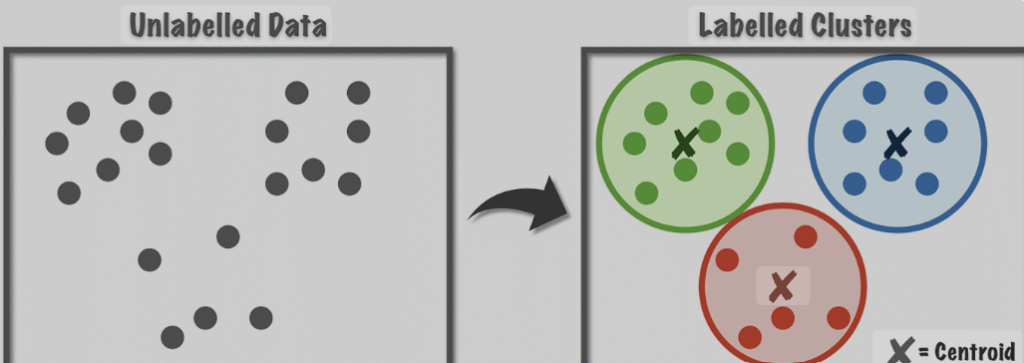
Supervised Learning Algorithms
Supervised learning is a type of machine learning where the algorithm is trained on labeled data, meaning that each input comes with a corresponding output. The goal is for the model to learn a mapping from inputs to outputs so that it can make accurate predictions on new, unseen data. This type of learning is often used when the desired outcome is known in advance, such as predicting prices, classifying objects, or diagnosing diseases.
For example, in email spam detection, the algorithm is trained with emails that are already labeled as “spam” or “not spam.” By analyzing the features of these emails, such as the presence of certain words or sender information, the model learns to classify incoming emails correctly. Another example is house price prediction, where features like square footage, number of bedrooms, and location are used to predict the sale price of a property.
Popular supervised learning algorithms include Linear Regression (predicting numeric values), Logistic Regression (binary classification), Decision Trees, Random Forests, and Support Vector Machines (SVM). These algorithms rely heavily on historical, labeled data to make predictions, and their performance can be evaluated using metrics like accuracy, precision, recall, or mean squared error.
Unsupervised Learning Algorithms
Unsupervised learning is a type of machine learning where the algorithm is trained on unlabeled data, meaning there are no predefined outputs. The goal is to explore the structure of the data, discover hidden patterns, and group similar items together. It is widely used in situations where the underlying relationships in the data are unknown or need to be revealed.
For example, in customer segmentation, an e-commerce company may have data on customer purchases but no predefined categories. Using unsupervised learning algorithms like K-Means clustering, the model can group customers with similar buying behavior, helping businesses target marketing strategies more effectively. Another example is market basket analysis, where algorithms find products frequently bought together, even though no prior labels exist.
Common unsupervised learning algorithms include K-Means Clustering, Hierarchical Clustering, Principal Component Analysis (PCA), and Apriori Algorithm. These algorithms are evaluated based on metrics such as silhouette score, cluster cohesion, or explained variance, rather than direct prediction accuracy, because there are no known labels to compare against.

Supervised vs Unsupervised Learning Algorithms
Definition
- Supervised Learning: It is a type of machine learning where the model is trained using labeled data—that is, input data paired with the correct output.
- Unsupervised Learning: It deals with unlabeled data, where the model tries to find hidden patterns or structures without predefined outputs.
Data Type
- Supervised Learning: Works with input-output pairs (e.g., predicting house prices given features).
- Unsupervised Learning: Works only with input data and looks for relationships or groupings (e.g., grouping customers by behavior).
Goal
- Supervised Learning: The goal is to predict or classify outcomes based on past examples.
- Unsupervised Learning: The goal is to discover patterns, clusters, or associations in the data.
Examples of Algorithms
- Supervised: Linear Regression, Decision Trees, Random Forest, Support Vector Machines, Neural Networks.
- Unsupervised: K-Means Clustering, Principal Component Analysis (PCA), Hierarchical Clustering, Apriori Algorithm.
Output
- Supervised Learning: Produces specific predictions (like a label or value).
- Unsupervised Learning: Produces groupings, associations, or compressed data representations.
Evaluation
- Supervised Learning: Can be evaluated using accuracy, precision, recall, F1-score, or RMSE, since true labels are known.
- Unsupervised Learning: Harder to evaluate; metrics like silhouette score, inertia, or cluster purity are used instead.
Human Intervention
- Supervised Learning: Requires significant human involvement in labeling and preparing data before training.
- Unsupervised Learning: Requires minimal human supervision, since the algorithm learns directly from raw, unlabeled data.
Complexity
- Supervised Learning: Often less complex conceptually but computationally demanding, as it tries to minimize errors between predictions and known outputs.
- Unsupervised Learning: More conceptually complex, as it must infer structures and relationships without any guidance.
Use Cases
- Supervised Learning: Commonly used for spam detection, medical diagnosis, stock price prediction, sentiment analysis, and image classification.
- Unsupervised Learning: Applied in customer segmentation, anomaly detection, topic modeling, and market basket analysis.
Data Requirement
- Supervised Learning: Needs a large amount of labeled data, which can be expensive or time-consuming to prepare.
- Unsupervised Learning: Works with unlabeled data, which is easier to collect but less structured.
Output Nature
- Supervised Learning: Produces a deterministic output for each input (e.g., “yes/no,” “price = $200”).
- Unsupervised Learning: Produces probabilistic or structural outputs (e.g., “belongs to cluster A with 80% likelihood”).
Goal Orientation
- Supervised Learning: Primarily predictive, focused on forecasting or classification based on examples.
- Unsupervised Learning: Primarily descriptive, focused on exploring data structure and identifying hidden patterns.